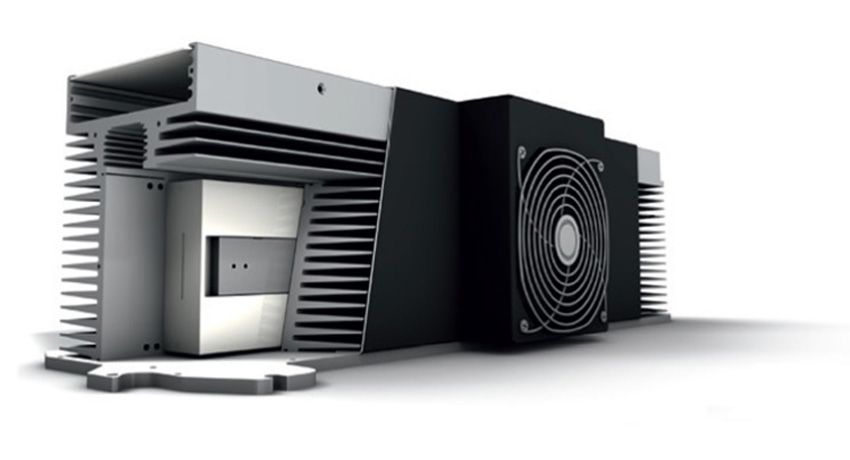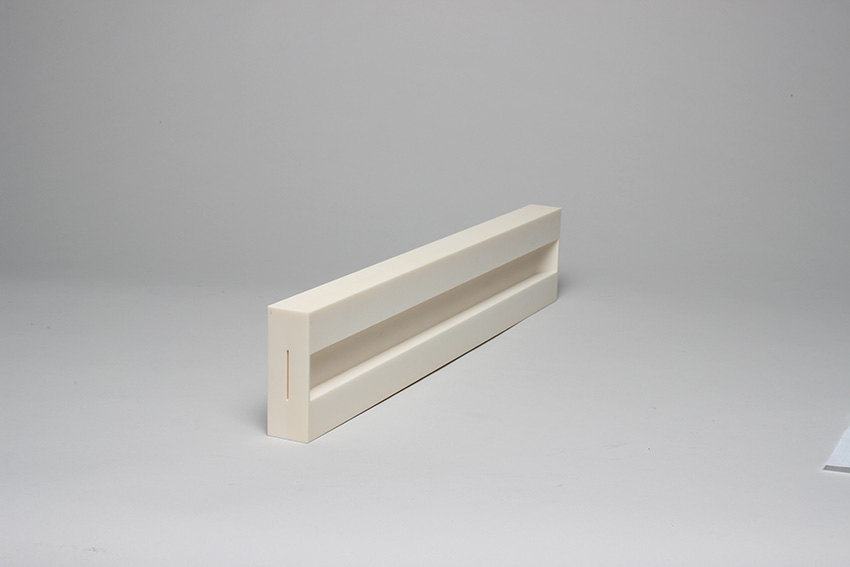How can a company improve a technology that has been basically the same for over 20 years? It requires a new standard of creative thinking that builds on successful CO2 laser engineering of the past, but re-invents the technology with a new design that eliminates old problems and creates ground breaking innovations… Welcome to the world of Iradion Laser Inc.
Carbon dioxide laser technology that was developed in the early 1980’s for industrial applications revolutionized manufacturing, because laser cutting systems were able to cut a variety of metals such as steel, stainless and aluminum with speed and accuracy using a focused heat beam, namely, a 10.6-micron wavelength laser beam. Companies like Trumpf, Bystronics, Amada, Cincinnati Incorporated, Mazak, Mitsubishi and others quickly entered the fabrication market with systems that accurately laser cut metals and non-metals with tolerances of + .010” or less.
Most of the early systems were powered by CO2 lasers that consisted of glass tubes with DC electrodes to energize a laser gas mixture of carbon dioxide, helium and nitrogen. See Figure 1. They required high voltage DC power supplies, laser gas circulation pumps, chillers for laser gas cooling and lots of maintenance. Because of their processing flexibility and versatility, they successfully changed manufacturing in the world. The tool was no longer a punch press or plasma torch, instead it was a precision beam of focused laser energy that could easily cut materials with a kerf width of 0.010” or less. The machine’s control and drives faithfully guided the laser focusing head to accurately follow the shape of the computer-generated part program. Parts could be quickly cut and/or modified via the part program, material was optimized with closely nested parts and expensive hard tooling was no longer needed.
In the late 1990’s, systems and machines drives became more accurate with ball screw, and eventually magnetic linear drives, part programming and nesting software became more user friendly, and CO2 laser technology embraced metal tubes with RF power supplies to create the same 10.6-micron laser beam of infrared energy.
By 2010, high power fiber lasers that used solid state electronics with a shorter wavelength of 1-micron entered the market, and appeared that they would replace CO2 lasers, because of the need for CO2 laser gas refills or optics replacement to mitigate laser gas degradation in the glass or metal tubes.
Though fiber lasers have proven to be a great solution for processing metals, their 1-micron wavelength does not couple well with plastics, polymers, wood, paper, fabrics and other popular non-metal materials. In fact, with the explosive use of non-metal materials in automotive, electronic, medical, packaging, textiles, industrial applications and other markets, the demand for high performance, reliable and low maintenance CO2 lasers with 10.6, 10.2 and 9.3-micron wavelengths have experienced a dramatic renaissance.

Iradion Patents a New CO2 Laser Technology and Launches New Opportunities
In 2001, a laser galvo coding module was developed using a new design 10-watt ceramic core laser for the food and drug industry. Iradion Laser Inc. was founded in 2007 after it acquired the intellectual property of the new technology and patented the design. Soon after, Iradion was awarded a contract to supply the Department of Defense with CO2 lasers that had a 10-year shelf life. This was achieved by utilizing an aluminum oxide ceramic chamber to hermetically seal the CO2 laser gas mixture, thus guaranteeing performance and reliability. Eventually, Iradion’s R&D programs expanded its laser product lines with models ranging from 25 watts to 250 watts, and soon, higher wattage models will be released.
Why Iradion Ceramic Core CO2 Lasers are superior to Glass or Metal Tubes
As stated, CO2 laser technology has traditionally relied upon glass or metal tube designs that enclosed the laser gas mixture and metal electrodes within chamber. Over time, the metal electrodes will sputter metal atoms into the laser gas mixture thereby contaminating it and causing power loss. In addition, the elusive helium in the gas mixture will escape through seals, gaskets or porous welds further degrading the gas and reducing laser beam output.
Iradion patented ceramic core CO2 laser design virtually eliminates these problems, because the laser gas mixture is hermetically sealed within an inert aluminum oxide ceramic chamber. The RF metal electrodes are mounted externally and sandwich the ceramic core, thus energizing the laser gas remotely guaranteeing no laser gas degradation. See Figure 3.
More importantly, the Iradion patented ceramic core CO2 laser technology elevates the specifications of conventional CO2 laser by producing excellent performance and reliability:
- typical rise /fall times: < 75 µsecond
- excellent beam quality: M² < 1.2
- power stability range: 2% power to max power
- hermetic-sealed laser gas: no laser gas refills warranted for 7-years
With excellent beam quality, exceptional power stability, fast rise/fall times and superior performance and reliability, manufacturers and integrators are assured that their systems will operate with optimum laser processing results in 24/7 production environments.

Iradion Laser Models offer many Power Levels in a Compact and Light Weight Package
The Eternity, Infinity and Destiny Series represent the three product lines that are available from Iradion; each series exhibits identical footprints.
The Eternity possesses the smallest footprint and provides 25, 30 and 40-watt models with fan-cooling and a choice of 10.6, 10.2 or 9.3-micron wavelengths.
The Infinity represents the most versatile series because it can be selected with either water-cooling or fan-cooling and a selection of 50, 60, 80, 100 or 120-watts power levels. 10.6, 10.2 and 9.3-micron wavelengths are also available. See Figure 4. The Destiny is offered in a 200 or 250-watt water-cooled model and has a unique distinction of being the smallest CO2 in its class. The laser measures approximately 24” L x 8” W and 4” H and only weighs 52 lbs., so it can easily be integrated into work stations, mounted directly to gantries or on a robot arm.
Industries and Applications that have experienced the Iradion Advantage
During the past decade, Iradion lasers have successfully expanded the productivity of different CO2 laser applications including cutting, drilling, marking, etching, engraving, ablating, heat treating, sintering polymer powders for 3D manufacturing, splicing optical fibers, wire stripping, medical procedures, glass processing, textile processing, packaging and converting , and other laser processes. Equipment and system builders as well as integrators have successfully integrated Iradion lasers into their product lines, and have acknowledged that Iradion lasers are superior to conventional designs.
Over the next 10-years, it is forecasted that the utilization of CO2 lasers will expand over 5% per year in most global markets, because of the rapid expansion of non-metal materials usage in industries such as automotive, electronics, medical, fabrics/clothing, retail packaging and converting, consumer products, signage, customized promo products, etc. CO2 lasers represent the best solution for processing parts in high production environments at the lowest cost and labor content.
Today, Iradion Laser Inc. is incorporated in Delaware, and operates a “state of the art” 34,000 square foot facility located in Uxbridge, Massachusetts to support Sales, Service, Parts, Engineering, Manufacturing and Administration offices. In addition, Iradion has a Sales and Service operation in Shenzhen, China and a worldwide network of distributors. See Figure 5.
In closing, Iradion Laser Inc. looks forward to solving your laser application needs and providing the highest quality laser products and services.
Visit www.iradionlaser.com and learn how ceramic core CO2 lasers can unlock new opportunities for your business.
Author: Robert Kloczkowski, Iradion Sales and Marketing Manager at Iradion Laser Inc.

+1 734-395-0832


